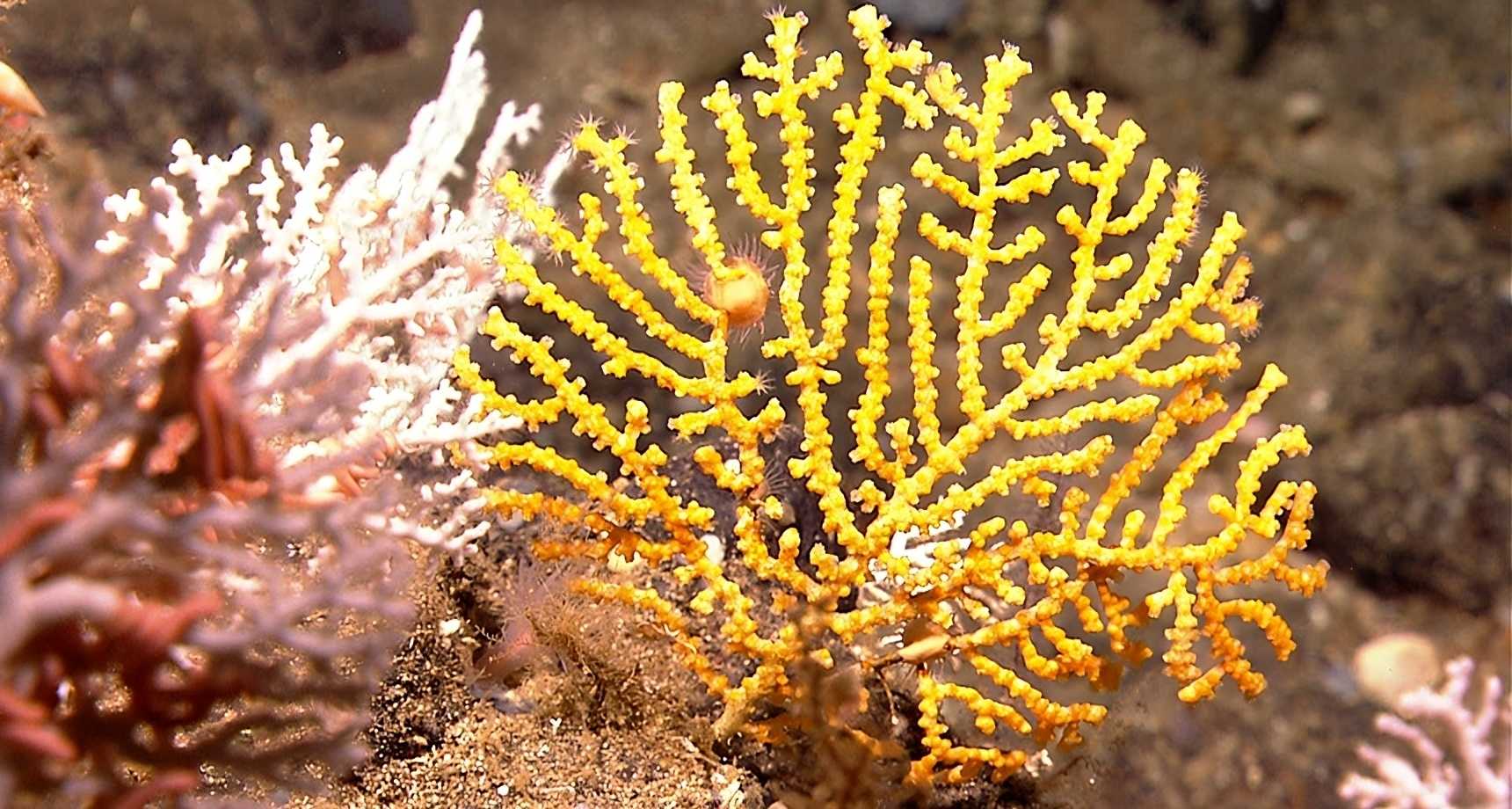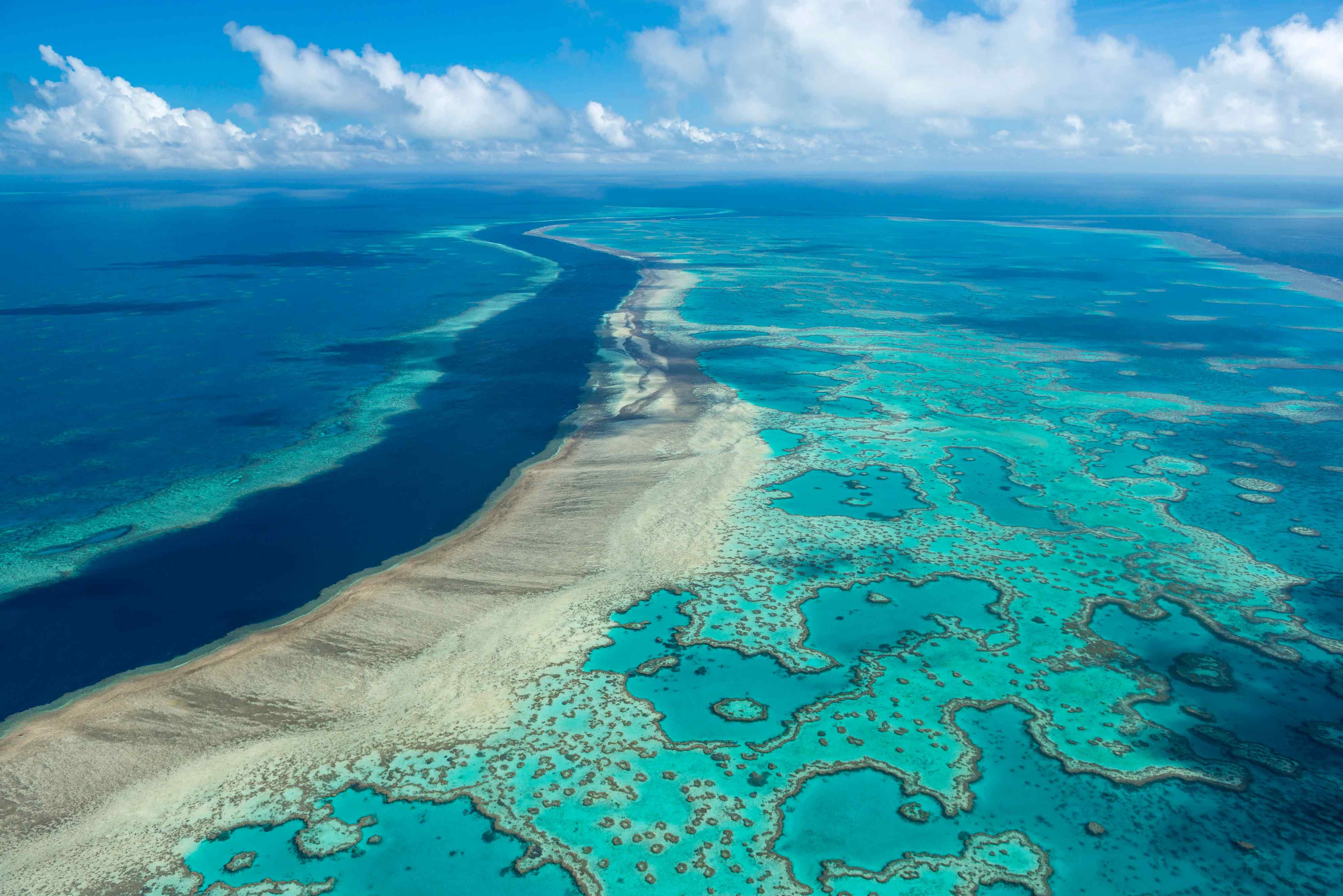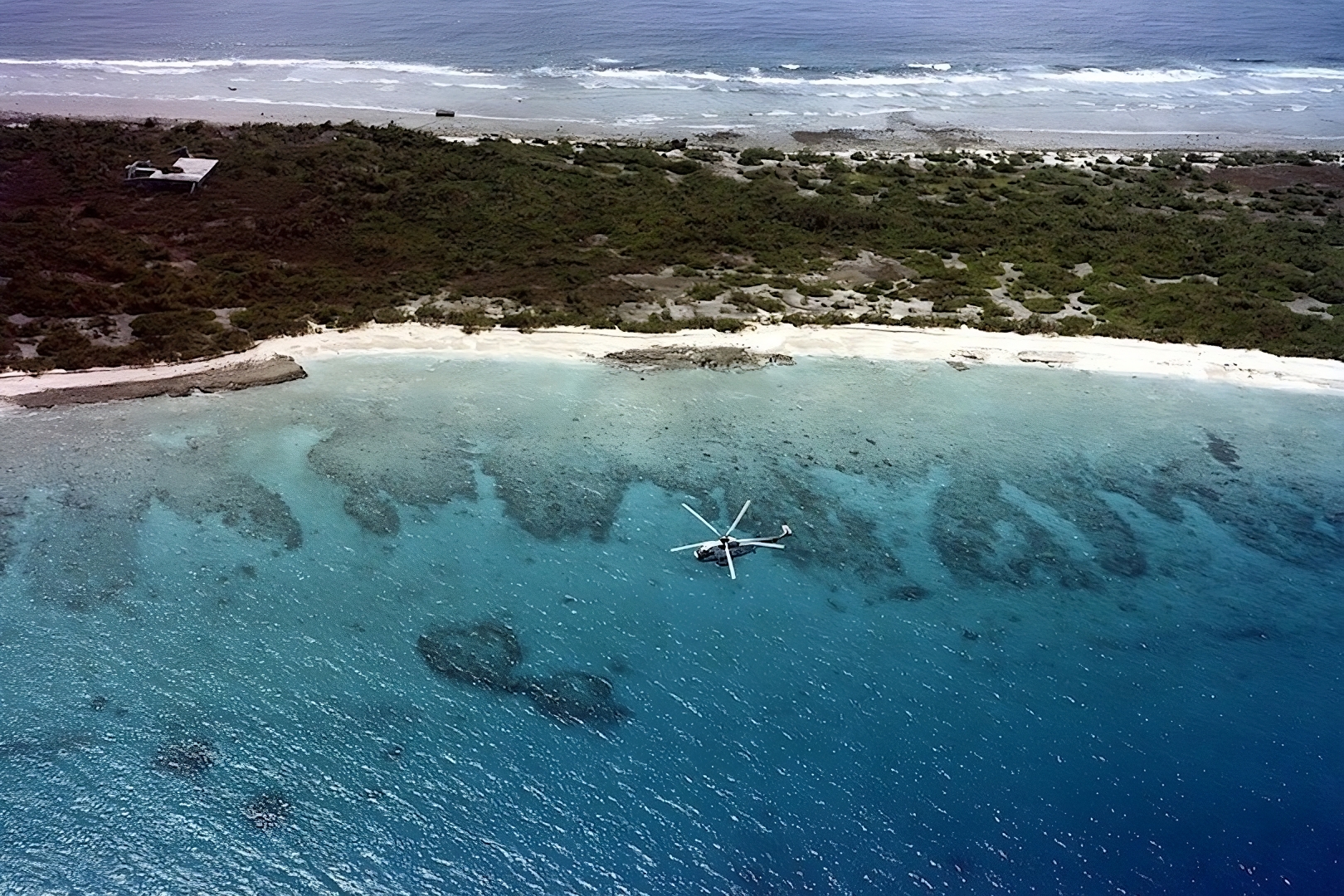Reefs, alternatively referred to as coral reefs, are expansive submerged formations composed of the calcified remains of marine invertebrates known as corals. These corals, classified as hermatypic, demonstrate remarkable resilience with their hard and stony composition. By cleverly utilizing calcium carbonate sourced from the encompassing seawater, they skillfully mold an enduring exoskeleton, reminiscent of the artistry of a master ironworker fashioning armor. While vibrant with life, reefs also serve as bustling centers of biodiversity, nurturing a plethora of marine organisms within their dynamic surroundings. Remarkably, the origins of reef-building corals date back an astonishing 250 million years, attesting to their enduring existence throughout the ages.
What Are Coral Reefs?
The coral reefs are interwoven by colonies of minute, soft creatures known as polyps, resembling anemones, and classified as invertebrates belonging to the order Cnidians.
In the case of stony corals, these polyps take up residence within a calyx, akin to a cup, which they construct through secretions. This cup is composed of calcium carbonate, commonly known as limestone. The polyps firmly attach to this limestone framework, creating a vibrant mass of living tissue, from which the term “hard corals” originates. Over the span of centuries, these coral reefs expanded and developed into magnificent colonial structures, enriching the marine environment.
Coral reefs are prevalent in various oceans worldwide, particularly in the warm, tropical waters of the Caribbean Sea. However, the oldest reefs are situated in clear and shallow waters, predominantly in tropical and subtropical climates. Among these reefs, the Great Barrier Reef in Australia stands out as one of the largest, spanning an impressive 2400 kilometers in width. The presence of shallow and clear waters is vital to ensuring that sufficient light penetrates the area, supporting the process of photosynthesis.
The life cycle of polyps involves habitation, reproduction, and the formation of skeletons that leave behind a lasting legacy. Surrounding the coral reefs are other polyps, firmly attached to the remnants of their once-living counterparts. Polyps reproduce either through fragmentation, where new polyps form from broken pieces, or via spawning. Fish, sea turtles, sponges, shrimp, lobsters, crabs, and seahorses are just a few of the various invertebrates that frequently live alongside thriving reefs and add to their rich tapestry of colors.
Numerous factors, such as the presence of organisms like coralline algae and the physical action of waves that transport sand towards these reefs, affect the establishment of corals on reefs. Notably, the vast majority of the ocean floor remains unexplored, with scientists having examined only 20 percent of its depths. As a result, reefs that formed centuries ago continue to be discovered, unveiling the mysteries hidden beneath the waves.
Critically Important Reef Member: Zooxanthellae

Moreover, alongside the diverse array of marine creatures inhabiting their vicinity, reefs play host to an essential symbiotic partner known as zooxanthellae. These remarkable organisms are single-celled, photosynthetic firebright algae. Within this fascinating relationship, zooxanthellae harness the coral’s waste products during photosynthesis, reciprocally providing essential nutrients to the coral in return. The strategic placement of most reef-building corals near the water’s surface is no coincidence; rather, it ensures their access to indispensable sunlight, crucial for successful photosynthesis. The inclusion of zooxanthellae within the coral’s framework significantly contributes to the overall growth and thriving development of the reef ecosystem.
Three Main Types of Coral Reefs
Coral reefs can be classified into several types based on their formation and geographical location.
The main types of coral reef formations are:
Fringing Reefs

Fringing reefs are the most common type of coral reef and are found close to the shorelines of continents or islands. They directly border the coast and grow seaward, creating a shallow platform along the shore. A small, shallow lagoon frequently separates fringing reefs from the surrounding land.
Barrier Reefs

Barrier reefs are larger and more extensive than fringing reefs. They also parallel the coastline but are farther offshore, leaving a deeper and wider lagoon between the reef and the land. Barrier reefs can be several kilometers in width and are usually found in areas with a gradual continental shelf drop-off.
Atolls

Atolls are circular or semi-circular coral reefs that encircle a central lagoon. They are formed from the remnants of a volcanic island that subsided over time, leaving only the coral reef structure above water. Atolls can be found in the open ocean, often surrounding sunken volcanic islands.
Reef types related to the three main reefs:
Patch Reefs
Patch reefs are smaller, isolated coral formations found within a lagoon or other areas of shallow water. They are often scattered throughout the lagoon and may be separated from the main reef structure.
Table Reefs
Table reefs, also known as platform reefs or terraced reefs, are elongated, flat-topped formations that run parallel to the shoreline. They are typically found in areas with strong wave action and are characterized by their relatively flat surface.
Ribbon Reefs
Ribbon reefs are long, narrow formations that run parallel to the coastline, separated from the mainland by a deep channel. They are often found in the Coral Sea and the Great Barrier Reef of Australia.
Reef Extinction or Dying
A substantial portion of coral reefs have skeletons composed of calcium carbonate. There has been growing awareness within marine circles regarding the vulnerability of these skeletal creatures to the phenomenon of ocean acidification. As ocean acidification ensues, the ocean’s pH level experiences a detrimental decrease, posing a severe threat to corals and other organisms relying on calcium carbonate structures.
In addition to ocean acidification, coral reefs face a multitude of other perilous challenges. Pollution in coastal regions constitutes one such threat, profoundly impacting the overall health of reefs. Furthermore, the escalating temperatures of the waters lead to coral bleaching, while construction and tourism-related activities inflict damage on these delicate ecosystems. Importantly, the root cause of ocean acidification originates from the absorption of fossil fuels from the atmosphere.
The Importance of Reefs for Life
Reefs encompass the planet’s most diverse and invaluable ecosystems, serving as crucial guardians of coastlines against the relentless forces of waves and tropical storms. Besides their protective role, reefs act as thriving habitats and sanctuaries for a myriad of marine organisms. Their significance is further underscored by their contribution to vital nutrients, such as nitrogen, that sustain marine food chains. Additionally, these remarkable ecosystems play a pivotal role in maintaining carbon and nitrogen equilibrium while facilitating the recycling of essential nutrients.
Functioning as veritable “hospitals” for marine life, reefs offer a sanctuary to wounded creatures of various sizes, including both large and small fish and other denizens of the ocean. Furthermore, these coral havens assume the role of nurturing grounds for young fish before they venture into the vast expanse of the deep sea. Often likened to fish nurseries, the coral formations of reefs play a paramount role in supporting marine biodiversity. As exemplified by the Great Barrier Reef, whose contribution alone amounts to a staggering $1.5 billion to the Australian economy, reefs hold substantial economic value by virtue of the tourism and fishing industries. In fact, their global market, encompassing various sectors like food, stands at an impressive $30 billion.
How Do Corals Eat?
Diversity thrives beneath the ocean’s surface, where a plethora of coral species exist in stunning array. Among them are the rounded coral formations reminiscent of brains, the captivating “folded brain corals,” and the elegant sea whips and fans resembling vividly colored trees. Embracing this vibrant ecosystem are frequent visitors like jellyfish, sea anemones, and the intriguing Portuguese man o’ war (Physalia physalis). Even the mantis shrimp find their way into this underwater paradise.
Coral reefs exhibit fascinating feeding strategies, manifesting in two distinct ways. Certain species employ stinging tentacles located along their bodies’ sides to ensnare small sea creatures like fish and plankton. However, in the case of the majority of coral reefs, the sustenance they require primarily stems from photosynthesis. Through a symbiotic relationship with algae, particularly zooxanthellae, these coral communities thrive and persist, deriving their essential energy from this photosynthetic partnership.
How Do Corals Reproduce?
Certain organisms, such as brain corals, exhibit hermaphroditic characteristics, wherein they possess both male and female reproductive structures. The reproductive patterns within species vary, as some participate in an annual reproductive event while others undergo mass spawning. During this process, numerous eggs are released simultaneously, and in some cases, they travel vast distances, spanning several kilometers. On the other hand, species like elkhorn coral (Acropora palmata) follow a gonochoric strategy, forming colonies consisting exclusively of either males or females.
How Long Do Corals Live?
Coral reefs that yield significant ecological benefits to both humanity and the planet have an average age ranging from 5,000 to 10,000 years. Despite covering a mere fraction of the ocean floor, approximately 300,000 square kilometers, these reefs support a diverse array of marine life, with about a quarter of known marine species relying on them for sustenance, protection, breeding, and healing. Often likened to the “rainforests of the seas,” these ecosystems provide a conducive habitat for over 4,000 fish species, 700 coral species, as well as numerous plant and animal species.
Water pollution is one of many factors that is exacerbating the negative impact on coral reefs. Chemical pollutants such as pesticides and fertilizers, along with petroleum-based substances like oil and gasoline, as well as wastewater discharge and sediments, pose significant obstacles to the growth and development of coral colonies. As a consequence, this disturbance adversely affects the ecological relationships between the plants and animals that constitute the reef ecosystem.
Coral Bleaching
The escalating global temperatures driven by the effects of global warming will lead to the depletion of zooxanthellae, which are vital food sources for coral polyps. Consequently, the vibrant coloration of coral reefs will fade, leaving behind their bleached, white exoskeletons, a phenomenon known as coral bleaching. Such bleaching events are highly detrimental, causing the complete mortality of affected colonies.
Additionally, the destructive fishing practices of cyanide fishing, where cyanide is dispersed into the water to immobilize fish, and the use of explosives to catch fish have severe consequences for coral reefs, leading to their deterioration and potential obliteration. Experts express concern that these two factors alone could result in the irreversible destruction of entire reef ecosystems.
Impacts of Coral Reef Extinction
The preservation of healthy reefs stands as the pivotal factor in ensuring the well-being of our oceans, which, in turn, plays a vital role for the entire spectrum of life on Earth. The repercussions of reef loss are profound, leading to the extinction of numerous marine species. Furthermore, the absence of protective reefs along coastlines renders them more susceptible to storm damage, posing a significant threat to low-lying countries and islands that may eventually submerge due to rising sea levels. Moreover, the coral reef industry, which sustains a substantial $30 billion, faces imminent collapse without concerted conservation efforts.
In response to this crisis, the Australian government has adopted a comprehensive approach aimed at safeguarding the Great Barrier Reef’s survival. The strategic plan encompasses a substantial reduction and eventual elimination of harmful materials and chemicals discharged into the ocean. Concurrently, efforts to curtail fishing activities and closely monitor the quality of water reaching the reef take precedence in conservation endeavors.
Parallel initiatives are underway to regenerate the reef’s vitality. Scientists are actively seeking to accelerate the growth of reefs by utilizing more robust and resilient coral species, carefully cultivated in laboratories and exposed to conditions mirroring the projected ocean temperature and acidity levels for the forthcoming decades.
Additionally, a group of coral reef ecologists is pioneering novel techniques involving the growth of corals on steel frames strategically placed in damaged areas of the reef. Remarkably, the introduction of electric currents through these frames has demonstrated a remarkable three- to fourfold increase in coral growth rate, aiding in reef rehabilitation and enhancing the corals’ resilience during bleaching events. Such innovative approaches hold promise for revitalizing the reef ecosystem and fortifying coral populations against environmental challenges.
